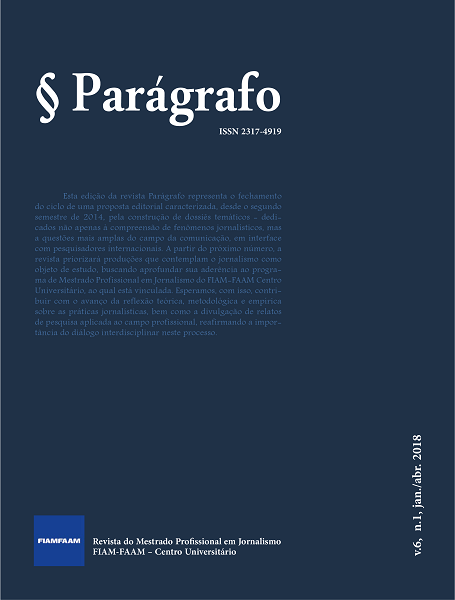Examinando uma técnica algorítmica: o classificador de bayes como uma leitura interessada da realidade
Palavras-chave:
Técnicas algorítmicas, Classificador de Bayes, Estatística, Relações de poderResumo
Este artigo descreve a noção de "técnica algorítmica" como um meio-termo entre algoritmos concretos, algoritmos implementados e a crescente área de estudos e teorizações sobre software. As técnicas algorítmicas especificam princípios e métodos para realizar atividades em um meio de software. Portanto, estes princípios e métodos constituem unidades de conhecimento especializado no âmbito da criação e desenvolvimento de softwares. Neste estudo, proponho que as técnicas algorítmicas são um objeto adequado de estudo nas áreas de ciências sociais e humanas, visto que elas capturam os princípios e técnicas centrais que se escondem detrás de softwares e raramente utilizam uma linguagem ou são descritas de forma acessível. Para propor meu estudo de caso, eu concentro o foco de análise no campo da ordenação informacional. Em primeiro lugar, discuto a ampla trajetória histórica do raciocínio formal ou "mecânico" aplicado a questões comerciais e governamentais. Em segundo lugar, foco minha investigação em uma técnica algorítmica específica: o classificador de Bayes. Essa técnica é explicada através da leitura da obra original de M. E. Maron escrita no começo dos anos 1960. A obra é apresentada como uma maneira de sujeitar uma realidade empírica e "dataficada" a uma leitura interessada que atribua significado para cada variável na relação com um objetivo operacional. Após a discussão sobre o classificador de Bayes em relação a questões de poder, o artigo retoma sua motivação inicial e defende uma crescente atenção às técnicas algorítmicas nos estudos de software.
Downloads
Publicado
Edição
Seção
Licença
Autores que publicam nesta revista concordam com os seguintes termos
a) Autores mantém os direitos autorais e concedem í revista o direito de primeira publicação, com o trabalho simultaneamente licenciado sob a Licença Creative Commons Attribution que permite o compartilhamento do trabalho com reconhecimento da autoria e publicação inicial nesta revista.
b) Autores têm autorização para assumir contratos adicionais separadamente, para distribuição não-exclusiva da versão do trabalho publicada nesta revista (ex.: publicar em repositório institucional ou como capítulo de livro), com reconhecimento de autoria e publicação inicial nesta revista.
c) Autores têm permissão e são estimulados a publicar e distribuir seu trabalho online (ex.: em repositórios institucionais ou na sua página pessoal) a qualquer ponto antes ou durante o processo editorial, já que isso pode gerar alterações produtivas, bem como aumentar o impacto e a citação do trabalho publicado (Veja O Efeito do Acesso Livre).
(ex.: em repositórios institucionais ou na sua página pessoal) a qualquer ponto antes ou durante o processo editorial, já que isso pode gerar alterações produtivas, bem como aumentar o impacto e a citação do trabalho publicado (Veja O Efeito do Acesso Livre).

